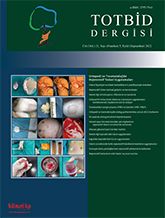
Fundamental principles of the synthetic chondral scaffolds, which have been introduced parallel to the developments in tissue engineering technologies and applied to regenerate hyaline cartilage, are defined as providing highest cell concentrate in the cartilage lesion during healing, minimizing the negative effects of deforming forces to guarantee formation of a stable fibrin clot, and maintenance of a constitutional scaffolding during regenerative cartilage tissue formation. The most crucial factors in both cell-free or cellular scaffold applications are the quality of the implant, molecular basis, and mechanic stability. Main indications of regenerative joint surgery using either a cellular or cell-free chondral scaffold are symptomatic focal Outerbridge grade 3 or 4 cartilage lesion in young active patient, presence of healthy cartilage tissue covering the joint surface except lesion area, and lesion size less than 3-4 cm2. According to the data acquired via studies comparatively evaluating the clinical results following application of cell-free versus cellular scaffolds, modern cell-free implants with their material specifications regarding the stimulation of intrinsic tissue regeneration processes have been demonstrated as effective as cellular scaffolds. Research on developing various kinds of chondral scaffolds used as single-stage regenerative surgery continue not only to facilitate applications but also decrease total costs of surgical interventions.